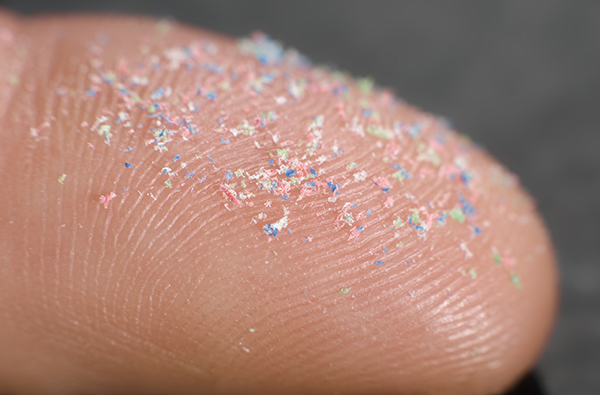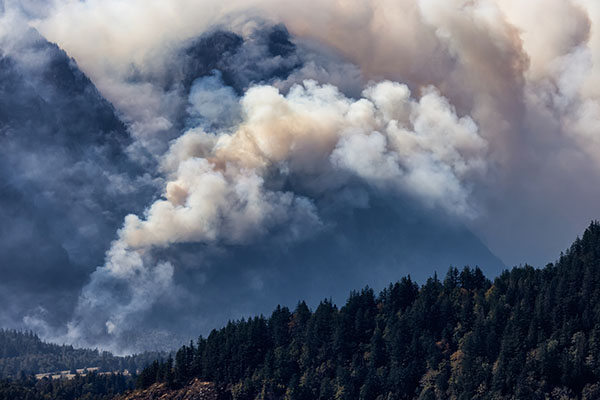
What are aerosols?
Aerosols are tiny droplets that are linked to the formations of clouds. They are either liquid or solid microscopic particles that can be found in the atmosphere.
Aerosols are made up of different natural or man-made substances and are formed through either the dispersal of material on the Earth’s surface or the reaction of gases in the atmosphere.
There are three main types of aerosols:
- Desert dust
- Volcanic
- Anthropogenic/human-made
Scientists posit that while aerosols can affect climate, the variability of their location and their short lifespan make it hard to measure their exact concentration and the extent of their effect.
Aerosols have both a direct and indirect effect on climate. Directly, they scatter sunlight back into space, cooling the planet. For example, it is believed that pollution has shortened the annual crop growing season by about one week in the eastern regions of the U.S.
Indirectly, aerosols affect the climate by changing cloud properties. Aerosols are crucial for cloud formation, acting as "seeds" to trigger the formation of cloud droplets.
Any increase in aerosol concentration can make water in a cloud spread over more and smaller particles. Because smaller particles fall more slowly in the atmosphere, increasing aerosol concentration ultimately reduces the amount of rainfall.
Aerosols and radicals
The majority of aerosols turn into a thin haze in the lower atmosphere and are usually washed out of the air by rain in about a week. However, this isn't the case with volcanic aerosols. Since there isn't any rain in the stratosphere, volcanic aerosols can remain in it for as long as two years. They then reflect sunlight and cool the Earth’s surface.
In contrast, desert dust aerosols absorb and reflect sunlight. Once desert dust aerosols reach the atmosphere, the minerals they contain absorb sunlight and increase the temperature of surrounding air. This warm air prevents the formation of storm clouds, which results in little to no rainfall.
At least 10 percent of the total amount of aerosols in the atmosphere is anthropogenic or man-made. Most man-made aerosols are produced by the burning of fossil fuels, like coal and oil. Other contributors include smoke from burning forests.
Eastern Asia, eastern North America, and Europe appear to be the top producers of sulfate aerosols in the atmosphere. At current production levels, human-made sulfate aerosols could soon outweigh naturally produced aerosols.
Man-made aerosols also reflect sunlight and stay in the atmosphere for three to five days. The aerosols may even enter clouds. Although man-made aerosols can increase the number of cloud droplets, the droplets also decrease in size so the clouds reflect more sunlight than they normally would.
Experts say that added aerosols help polluted clouds "to last longer and reflect more sunlight than non-polluted clouds. (Related: AEROSOLS: Tiny particles found to have a big impact on weather.)
According to the study published in ACS Central Science, sunlight triggers certain molecules at the ocean's surface. These molecules then activate others and the reaction produces larger molecules that might affect the atmosphere.
Some organic molecules are activated and they react once they absorb sunlight. These molecules then go through a "radical," which is a reactive intermediate. Radicals start a chain reaction that results in the formation of more complex chemicals.
This "radical initiator" pathway can help experts figure out which molecules in the surface of the sea end up in the atmosphere and seed clouds. Finding out which molecules in aerosols are in the atmosphere can help establish if they absorb or reflect sunlight and influence the temperature of the planet.
Earlier research has centered around the hydroxyl radical that reacts very efficiently in the atmosphere. Rebecca Rapf, Veronica Vaida, and their fellow researchers at the University of Colorado believe that α-keto acids, a class of compounds, can be photo-activated by sunlight and initiate reactions with molecules that don't absorb sunlight.
For the study, the researchers examined two different α-keto acids. Findings revealed that light made the acid react with several fatty acids and alcohols. These classes of molecules are often found near the ocean's surface, and they are pervasive in biology. The authors shared that this sunlight-initiated chemistry might influence the composition of the sea surface.
They concluded that the new and larger molecules that form can add to aerosols, alter their properties, and produce "interesting and previously unforeseen consequences to human health, visibility, and climate."
Read more articles on how sunlight and aerosols affect the environment at Environ.news.
Sources include:
Please contact us for more information.























